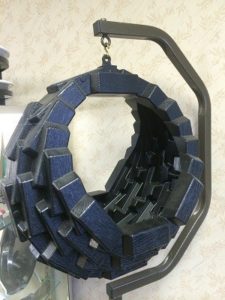
Being the owner of an injection molding business as well as a mold maker for 36 years, I have encountered a variety of problems with molds, machines and molded parts. Sometimes the fix for the problem is so obvious that you just pass it right up. I would like to share some of these issues with you.
One common problem which is very annoying is ejecting a part while it is in an automatic cycle and the part either does not fall or it gets sucked back into the cavity. Nearly 100% of the time the cause is the ejector pins being too long. This causes the pin to actually cast an indent on the part if the ejector plate is pulled back the part will get sucked into the cavity. To avoid this problem in injection molding, I normally grind the ejector pins .002-.003ʺ below the cavity surface. By doing this, there are no chances of the part staying on the ejector pins.
Non-fills in injection molding are another common problem. Most of the time this can be resolved by putting in a simple vent. The rule of thumb is having a vent directly across from the gate. If the mold was built at an injection mold making shop and shipped to an injection molding shop and the vents were left out of the mold, it must be shipped back to the injection mold maker to have them put the vents in which causes a lot of down time.
In the injection molding industry fast cycles are a must. One of the main causes of slow cycles is insufficient cooling in the mold. Cores that are standing need to have some kind of water because the heat gets drawn directly into the core and causes all kinds of problems. Thick areas also need to have cooling. I always say put as much water in the mold as possible. If the injection molder needs it, then it is there and vice versa.
Another common problem in injection molding is the sprue sticking. By having a large enough puller on the sprue, the puller pin should eliminate this problem. One of the most overlooked causes of a sprue sticking is that the nozzle orifice diameter is larger than the orifice diameter of the sprue bushing.
These are just some problems that initially occur with injection molds. These common problems are very easy to correct. At Toth Mold/Die Inc. we are able to work out all the problems before a mold is shipped to the customer.
In a future blog I will address some problems that occur with the molding machine and molded part.
